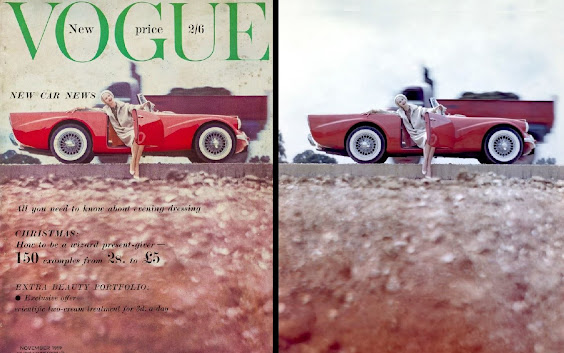Column (pronounced kol-uhm)
(1) In
architecture, a rigid, relatively slender, upright support, composed usually of
relatively few pieces.
(2) A decorative
pillar, most often associated with the classical architecture of antiquity, composed
of stone and typically having a cylindrical or polygonal shaft with a capital
and usually a base.
(3) Any
column-like object, mass, or formation.
(4) A vertical
row or list.
(5) A vertical
arrangement on a page of horizontal lines of type, usually typographically
justified.
(6) A regular
feature or series of articles in a newspaper, magazine, or the like, usually
having a readily identifiable heading and the byline; often related to a single
subject or theme
(7) A long,
narrow formation of troops in which there are more members in line in the
direction of movement than at right angles to the direction. A column one wide is said to be in
single-file.
(8) A formation
of ships in single file (largely archaic).
(9) In
botany, a column-like structure in an orchid flower, composed of the united
stamens and style.
(10) In
anatomy or zoology, any of various tubular or pillar-like supporting structures
in the body, such as the spinal column, each generally having a single tissue
origin and function.
(11) In
the design of accounting ledgers or computer-based spreadsheets, the vertical
array of data (contrast with the row; the horizontal array).
(12) In
chemistry, an object used to separate the different components of a liquid or
to purify chemical compounds.
(13) As
the fifth column (quinta columna), a group
of people which clandestinely undermines a larger group, such as a nation, to
which it is expected to be loyal.
1400–1450:
From the late Middle English columne,
columpne & columpe, from the Old French columne, from the Latin columna
(column, pillar, post), the construct being colum(e)n (peak) + a (creating the feminine form).
Column replaced the Late Middle English colompne, also a Latin derivation and borrowed from the Anglo-French. The Latin columna
was akin to collis (a hill) & celsus (high), both likely
derived from the Ancient Greek κολοφών
(kolophṓn), (top, summit).
Ultimate root was probably the Primitive European kel (to project). The sense
of "matter written for a newspaper" dates from 1785; that of the
“fifth column” is from 1936. The most
common derived forms are the adjectives columnar, columned or columnated. The first commercially successful spreadsheet
was VisiCalc (1979), Lotus 1-2-3 following in 1983 and Microsoft Excel in 1985; built with columns and rows, the spreadsheet was instantly successful in translating the physical ledger into digital form and is considered the "killer app" which legitimized the use of personal computers in business.
The Fifth Column
A fifth column is group of people who undermine the security of the state in which they’re living, in support of an enemy force, historically as a prelude to invasion. The more modern and still current variation is the sleeper-cell, individuals or even families integrated into foreign populations where they lie dormant, awaiting activation. There’s no doubt the origins of the phrase “fifth column” can be traced to the Spanish Civil War (1936-1939) but, like many things from those years, the details are contested. The first recorded instance was in a telegram, sent on 30 September 1936 by a German diplomat to the Foreign Ministry in Berlin reporting a "supposed statement” by the nationalist leader General Franco (Generalissimo Francisco Franco (1892–1975; Caudillo of Spain 1939-1975) claiming that not only did he have four columns of Nationalist troops marching on Madrid but that inside the city, a secret ”fifth column” (quinta columna) of fellow-travelers within the city would support the nationalist’s military campaign and undermine the Republican government from within.
Adolf Hitler (1889-1945; Führer (leader) and German head of government 1933-1945 & head of state 1934-1945) and Franco, photographed at their day-long meeting at Hendaye, on the Spanish-French border, 23 October 1940.
The dictators' discussions revolved around Spain's participation in the War against the British but it proved most unsatisfactory for the Germans, the Führer declaring as he left that he'd rather have "three of four teeth pulled out" than have to spend another day with the Caudillo. Unlike Hitler, Franco was a professional soldier, thought war a hateful business best avoided and, more significantly, had a shrewd understanding of the military potential of the British Empire and the implications for the conduct of the war of the wealth and industrial might of the United States. The Allies British were fortunate Franco took the view he did because had he agreed to afford the Wehrmacht (the German armed forces) the requested cooperation to enable them to seize control of Gibraltar, the Royal Navy might have lost control of the Mediterranean, endangering the vital supplies of oil from the Middle East, complicating passage to the Indian Ocean and beyond and transforming the strategic position in the whole hemisphere.
The first known public use of the term is in the 3 October 1936 issue of the Madrid Communist daily Mundo Obrero. In a front-page article the party propagandist Dolores Ibárruri (1895–1989; known as la Pasionaria (literally "the passionflower" and used in the sense of "the passionate one" for her strident oratory) referred to the same statement as reported to Berlin but attributed it to General Emilio Mola (1887-1937). On the same day the another activist made a similar claim during a public rally and the Republican newspapers would in subsequent days repeat the story although with variations, some attributing the phrase to a different general. Whether all this was some of the fog of war or part of the disinformation campaigns inevitable in any conflict will never be known but by mid-October media, the press were already routinely referring to the "famous fifth column". Historians have never identified the original statement or its source. All the verified documentary evidence of people using the words quinta columna is of instances after the publication in the Republican press.
Although renowned for its art deco buildings, there's also much neo-classicism in Miami, Florida. A staple of gossip columns, Lindsay Lohan is pictured here among the columns, December 2013.
The “fifth column” caught the public imagination and became popular, Ernest Hemingway (1899-1961) using it as the title of the only play he wrote, published in his 1938 book The Fifth Column and the First Forty-Nine Stories. Initially, use tended to be restricted to military operations but it came to be applied more broadly to describe sympathizers of any cause not formerly attached to any structure and was by the early 1940s, used to warn of potential sedition and disloyalty within the borders both of the UK and US, the popular press running stories warning of a “Nazi Fifth Column”. Always one with a fondness for a pungent phrase, Winston Churchill reassured the House of Commons the "…parliament has given us the powers to put down fifth column activities with a strong hand". In Australia, a radio drama exploring the theme, The Enemy Within, was banned by the censor, the authorities apparently concerned listeners might confuse fact with fiction and become alarmed or worse.
General Franco’s troops interview a suspected fifth columnist. This photo was one of many staged for publicity purposes, a propaganda technique first first used at scale during the Spanish Civil War (1936-1940).
























